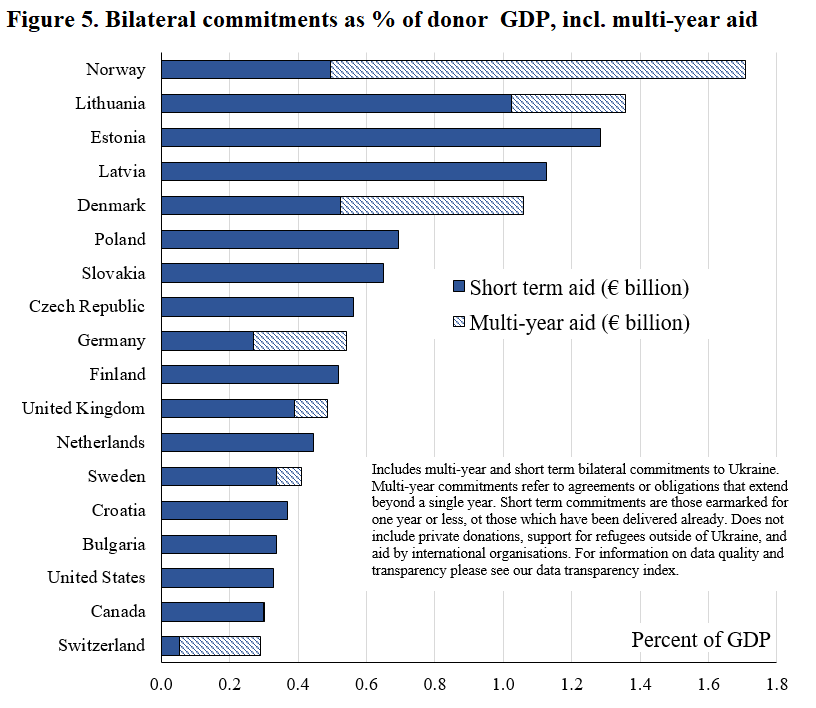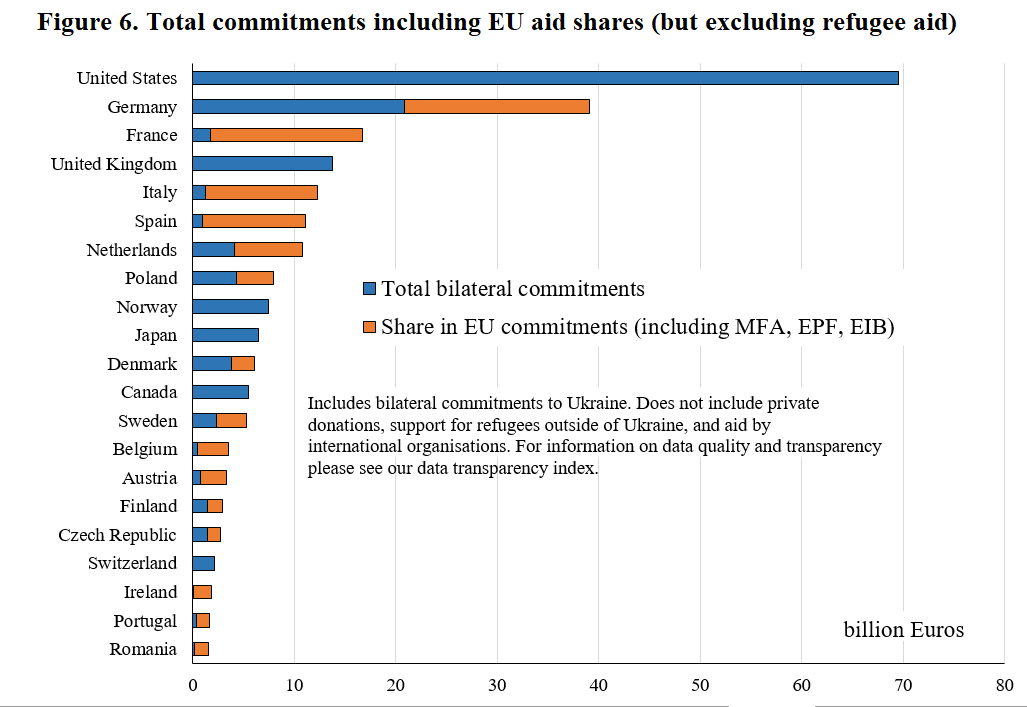📢 New update of our Ukraine Support Tracker. The big news: Europe overtakes the US by a large margin (total EU now 2x US). If we add UK, NOR, CH, then US commitments are only 45% of Europe’s (€70 bn vs €156 bn). This is a major shift compared to first year of war. A thread 1/7 

The key development is a shift to multi-year packages in Europe. The EU Commission announced a €50 bn “Ukraine Facility” in its budget (2024-27), making it the single largest donor👇. Norway promised €6.6 bn over 5 years. Additional multi-year packages came from 🇩🇰🇸🇪🇵🇹🇱🇹🇨🇭🇩🇪 🇬🇧 

The EU also caught up with the US in military aid commitments. If we add Norway and the UK, then Europe's total military pledges now clearly exceed those of the US. This is the first time we see that in our data since early 2022 

The new European multi-year packages shift the rankings in % of GDP (EU-level aid and refugee aid not included, see our website for that). For bilateral aid as % of GDP, Norway is now Nr. 1, followed by the Baltics. Germany enters top 10 for the first time, the US drops out 

On Germany, I have been very critical in the past, but it has become a major, reliable donor, incl. a new €10bn military package. Total promised aid is now €51 bn (10bn short & 10bn long-term bilaterally, 17bn EU aid share + 14bn for refugees). That is not far from US (€70bn) 

On heavy weapons (tanks, howitzers, MLRS etc), Germany now accounts for almost half of all EU commitments (47% of total delivered and promised by EU countries, according to our estimates). Similairly, GER has now committed almost half as much as the US 👇 

As always, kudos to the team @kielinstitute: Pietro Bomprezzi, Katelyn Bushnell, André Frank, Lukas Franz, Ivan Kharitonov, Christopher Schade and Leon Weiser. Feedback very welcome (ukrainetracker@ifw-kiel.de). More details, data, and graphs here: ifw-kiel.de/ukrainetracker
forgot to tag frequent readers that contribute to this debate @carlbildt, @OlafGersemann, @GuntramWolff, @MSchularick, @BachmannRudi, @CarloMasala1, @SamRamani2, @YGorodnichenko, @thorstenbenner, @manta_greg, @nicolange_, @adam_tooze, @GresselGustav, @GFelbermayr
• • •
Missing some Tweet in this thread? You can try to
force a refresh

 Read on Twitter
Read on Twitter













